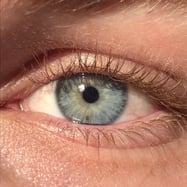 Sight is something that a majority of the population will never have to worry about losing. However, many diseases threaten sight, like age-macular degeneration (AMD). This degenerative disease becomes more likely with older age, and causes a loss of central vision in the retina. In the United States more than 10 million people suffer from AMD, the majority of those aged 55 and older.
Sight is something that a majority of the population will never have to worry about losing. However, many diseases threaten sight, like age-macular degeneration (AMD). This degenerative disease becomes more likely with older age, and causes a loss of central vision in the retina. In the United States more than 10 million people suffer from AMD, the majority of those aged 55 and older. 
(Image courtsey of Wikimedia Commons)
The University of Arizona is a leading institution for life science research. Receiving nearly $290 million in R&D expenditures in the 2015 fiscal year and more than $87.7 million in funding from the NIH in 2016, researchers at the University of Arizona are some of the most well-funded in the nation. Current funding at the university is being used to support ongoing research, establish new research facilities and fund new research projects. Projects in Tucson benefiting from this funding include:
- $10.3M in Alzheimer's Research Funding
- $7M in Research Funding for Asthma Study
- $54M for Life Science Research
With so much inactive funding supporting a vast array of projects, Tucson researchers have the means and desire to find the best and newest tools and technologies to use in their labs. Biotechnology Calendar, Inc. hosts an annual event at the University of Arizona that brings together lab suppliers and researchers in one place to meet face-to-face to discuss the new products available.
The 15th Annual BioResearch Product FaireTM Event in Tucson will occur November 2nd, 2017 when more than 100 researchers are expected to attend. Last year, researchers came from 28 different campus departments and 13 on-campus buildings.
To learn more about participating in this premiere life science marketing event, visit the link below:


